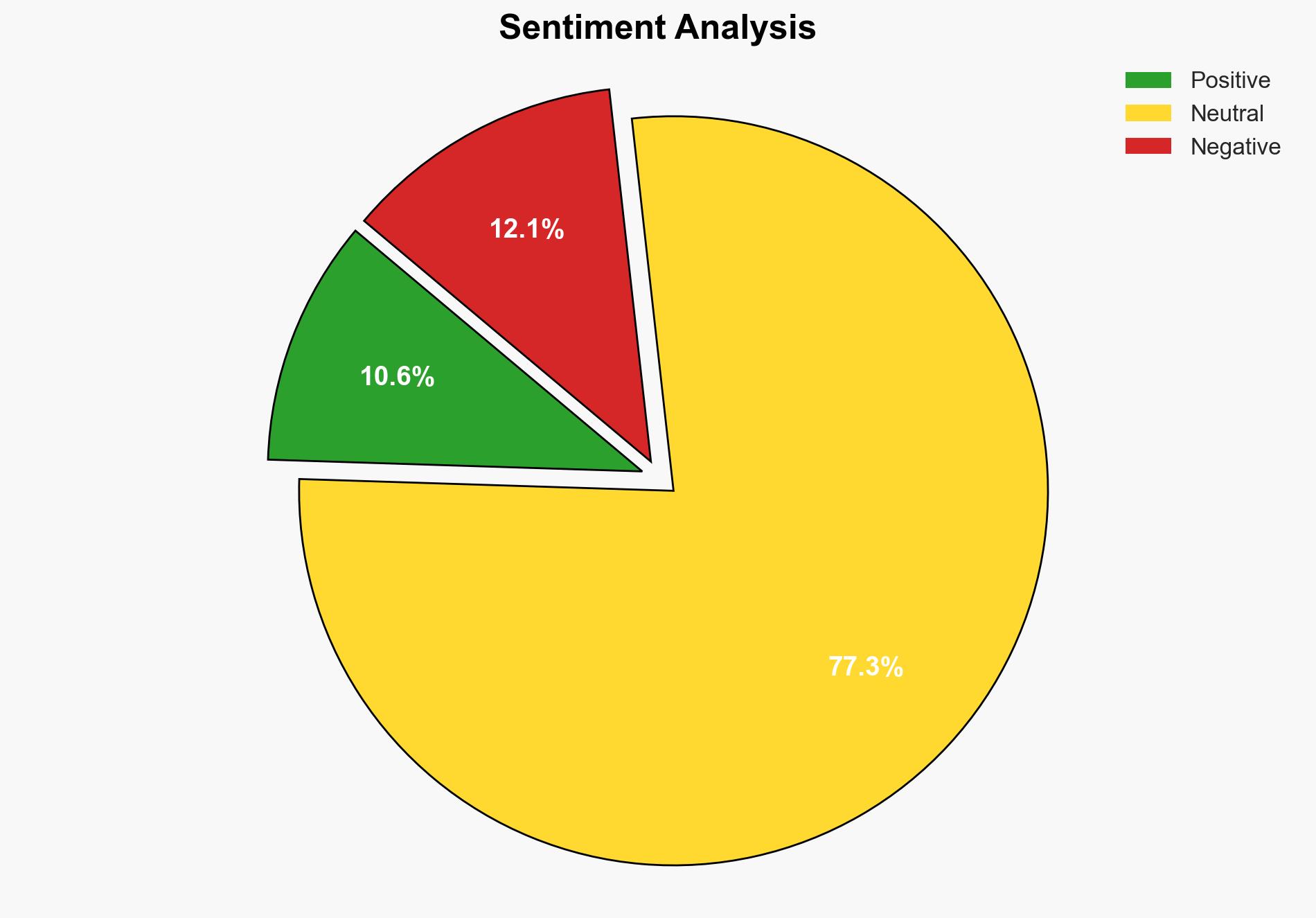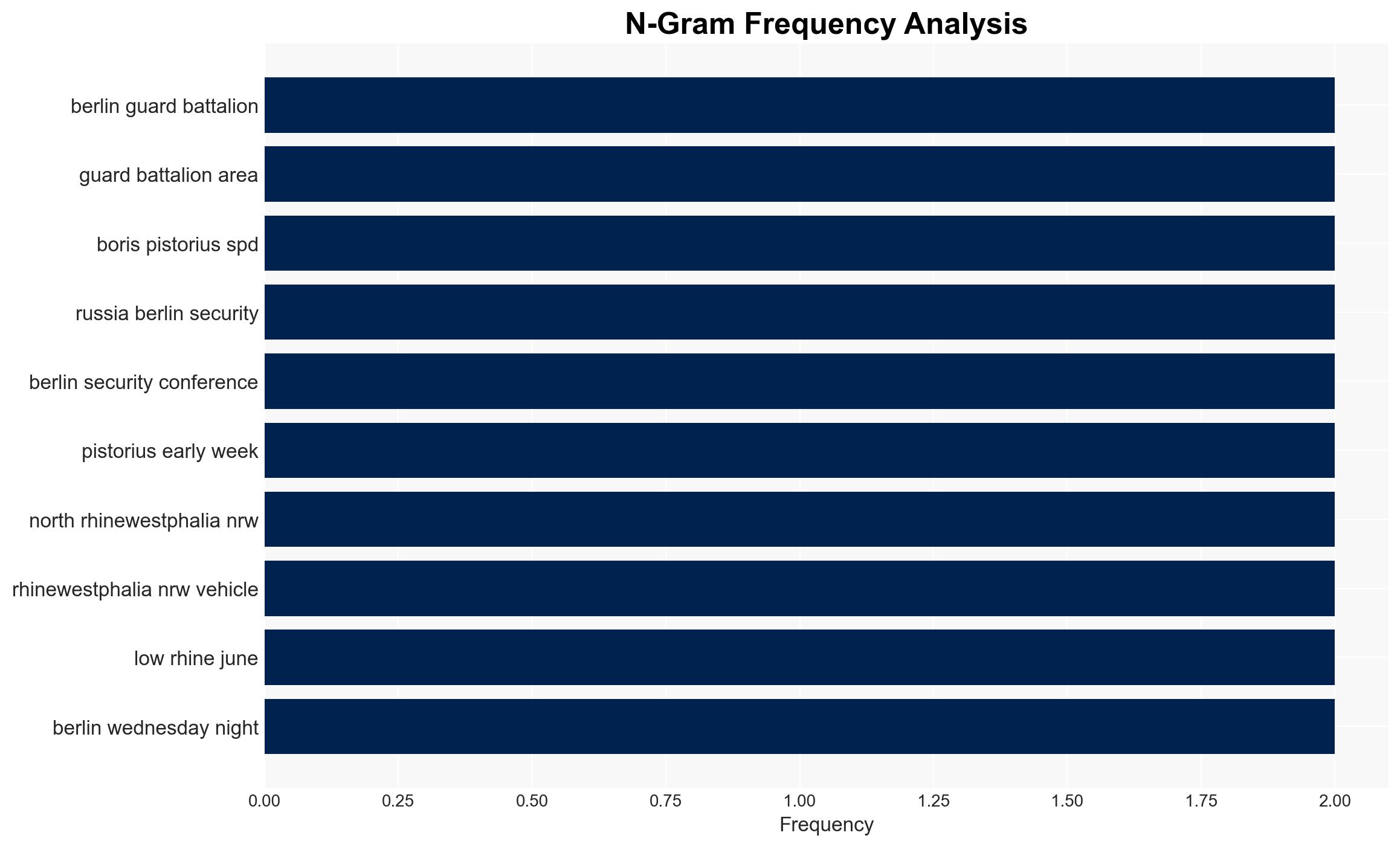IN PICTURES Bundeswehr soldiers storm a Berlin U-bahn station – The Local Germany
Published on: 2025-11-20
AI-powered OSINT brief from verified open sources. Automated NLP signal extraction with human verification. See our Methodology and Why WorldWideWatchers.
Intelligence Report:
1. BLUF (Bottom Line Up Front)
With a moderate confidence level, the most supported hypothesis is that the Bundeswehr’s exercise at the Berlin U-bahn station is a strategic preparation for potential hybrid threats, particularly from Russian aggression. The recommended action is to enhance intelligence-sharing mechanisms within NATO and increase public communication to manage perceptions and prevent misinformation.
2. Competing Hypotheses
Hypothesis 1: The exercise is a routine military training designed to improve readiness for domestic security threats, reflecting a general increase in preparedness due to geopolitical tensions.
Hypothesis 2: The exercise is a direct response to specific intelligence indicating an elevated risk of hybrid attacks from Russia, necessitating immediate readiness in urban environments.
Hypothesis 2 is more likely due to the context provided by recent events such as sabotage attempts and airspace violations, which align with the exercise’s focus on countering hybrid threats.
3. Key Assumptions and Red Flags
Assumptions: It is assumed that the Bundeswehr’s actions are solely defensive and not intended to provoke. The exercise’s timing and location are assumed to be strategic rather than coincidental.
Red Flags: The potential for misinterpretation by the public or foreign actors as aggressive posturing. The exercise’s visibility could be exploited by adversaries to fuel propaganda narratives.
Deception Indicators: The lack of prior public notification about the exercise could suggest an element of surprise intended for operational security, but it also raises questions about transparency.
4. Implications and Strategic Risks
The exercise could escalate tensions with Russia, especially if perceived as a provocation. There is a risk of cyber retaliation or misinformation campaigns targeting Germany. Economically, increased defense spending could strain public finances, while politically, it might polarize domestic opinion on military readiness and conscription laws.
5. Recommendations and Outlook
- Enhance NATO intelligence-sharing to ensure a coordinated response to hybrid threats.
- Increase public communication to clarify the purpose of military exercises and mitigate misinformation.
- Best-case scenario: Improved readiness deters potential threats without escalation.
- Worst-case scenario: Misinterpretation leads to heightened tensions or retaliatory actions.
- Most-likely scenario: Continued exercises and legislative changes improve readiness but require careful management of public perception and international relations.
6. Key Individuals and Entities
Boris Pistorius, Maik Teichgräber
7. Thematic Tags
Structured Analytic Techniques Applied
- Cognitive Bias Stress Test: Expose and correct potential biases in assessments through red-teaming and structured challenge.
- Bayesian Scenario Modeling: Forecast futures under uncertainty via probabilistic logic.
- Network Influence Mapping: Map relationships between state and non-state actors for impact estimation.
Explore more:
National Security Threats Briefs ·
Daily Summary ·
Support us





